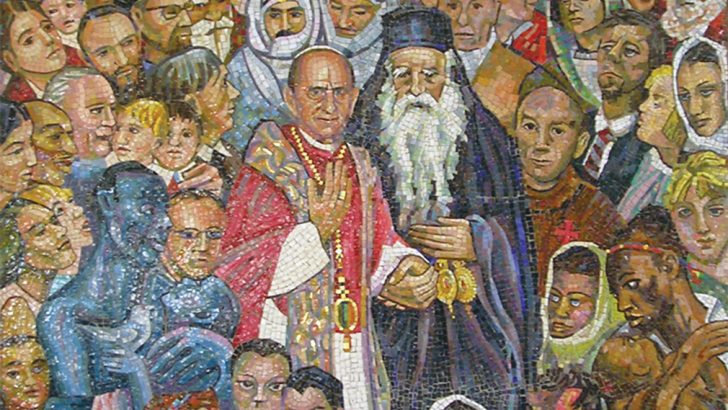The World of Books by the Books Editor
These days papal visits, such as Pope Francis will make to Ireland next week, are taken for granted. They have become commonplace, but in the perspective of the two thousand years of history they are a very recent development. Indeed, there is a great need for an historical study of the actualities and significance of papal travel over the centuries.
Jesus himself was content to stay in Palestine; but the Apostles and St Paul were very great travellers. As a matter of history we know little that modern historians would accept about the early Popes, though tradition has always spoken of Rome as the place of St Peter’s martyrdom, though quite how long he lived there is unknown.
But the long series of Councils between the First Council of Nicea in 325AD down to the Council of Trent (1545-1563), all imply that the Pope travelled to these, albeit that some were held in Near Eastern and Northern cities.
The centralising tendency of the Vatican was confirmed in 1441 when the Pope alone was declared superior to the universal council.
No Council was held again after Trent until 1870, and that was in the Vatican itself. The political revolutions in Europe, but more especially in Italy with the abolition of the papal estates meant that the Pope travelled nowhere (aside from the summer residence which all the nobility had in those days to escape to the hills from the heat of the cities).
But the confinement of the Popes to the Vatican from 1870 to 1929 did not affect the centralising tendency of the Church.
What made this new sense of power a reality was nothing to do with the Church, but with the emergence of the electric telegraphs and later the telephone, radio and other means of immediate communication.
The possibility of easier and more convenient travel with the creation of railways, and later the introduction of cars led to even faster mobility as well as communication.
With the Curia at the end of the line, the apostolic authority of individual bishops around the world, which had been such an important element in the Church’s growth since the first centuries, was diluted. But the style of the authoritarian of the 17th Century, which persisted in the Vatican, was not really working in the 20th Century, let alone the 21st Century. As more and more people benefited by travel to enlarge their ideas of the world, the Popes remained confined.
Modern Papal travel began with Paul VI, inaugurated with a visit to the Holy Land in 1964, followed by an even more historic mission to the United Nations in 1965, though the travels of John Paul II to 129 countries were unrivalled in any age. Since then the travels of both Pope Benedict and now Pope Francis have been significant.
Almost inevitably these visits have become grand events, occasions of mass celebrations and receptions to meet a country’s “great and good” (or what has to pass for them in many places).
They are greatly enjoyed. The visit in 1979 of Pope John Paul to Ireland was certainly seen and an historic event, especially by the generations that by then had drifted away from the Church (not all those seats in the Park were by no means occupied by the devout).
He pleaded passionately for the men of violence to desist. But his call did not bear full fruit until 1998.
The trouble with papal visits is that they become such mass events. All too often the chances of ordinary people encountering the Pope in any meaningful way, as is possible in Rome and elsewhere on other occasions, of meeting the pastor in his pastoral role, the teacher in teaching mode, are small, indeed impossible.
Perhaps in the future papal travels will develop to allow something more pastoral to emerge, which is why the present visit by Pope Francis may herald the start of something less grand, something more down to earth, and so in keeping with his own style, as priest, pastor and person.


 Peter Costello
Peter Costello Pope Paul VI in Holy Land
Pope Paul VI in Holy Land 